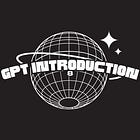Intelligent Prompting, Instantly Become a Professional Artist (GPT Introduction Part 9)
Unleash Unlimited Creativity with AI-Generated Artistic Creation
Hello everyone, I want to write 10 articles about the GPT Introduction series. This is the 9th one.
Pictures are the first sensory impact for readers.
The emergence of AI for drawing has completely changed how images are created. When a new tool reduces the cost of doing things to nearly zero, it's a great transformation.
But for ordinary people, it seems out of reach, blocked by the barrier of understanding AI.
Take Midjourney as an example. When you start using drawing AI, you'll face many problems.
Entry barrier: The fastest way to start with AI drawing is to go through the official English guide and understand the basics. You need at least a month ($30) to create thousands of images to get a basic feel for it. Then, spend another 1-2 weeks experimenting with different themes and parameters to truly get started.
Prompt issues: You have needs but no results. Online prompt templates can only be copied without understanding.
Control issues: Non-professionals often fail here. Many have heard that SD + ControlNet can control images well but struggle with setting up SD and the graphics card.
In short, simple prompts seem difficult to create.
Is it possible to break this "understanding barrier"?
The answer is to combine two top AI tools. Use GPT to create drawing prompts, and the drawing AI to create images. Just speak, and the image is done.
I chose Midjourney (MJ) for drawing AI, but this method works for any drawing AI like Stable Diffusion (SD), DALL-E, or even dynamic tools like Kaiber and GEN-2.
The key can be broken down into 4 points.
1. Words into "images". In GPT, a short prompt can generate a detailed drawing prompt, focusing on convenience and efficiency.
2. Understand the process. The result shouldn't just be a long spell for AI. It needs a professional, complete structure including visual elements, a full description, and a clear English drawing prompt. This helps you understand the image details and creation process, making it easier to control the image later.
3. Eliminate noise. Not all descriptions in a drawing prompt are effective. Can we "filter out the noise" and extract the essence directly?
4. Expandability. One result isn't enough. Can you specify style, theme, aspect ratio, and other details for future use?
Let's solve these one by one.










